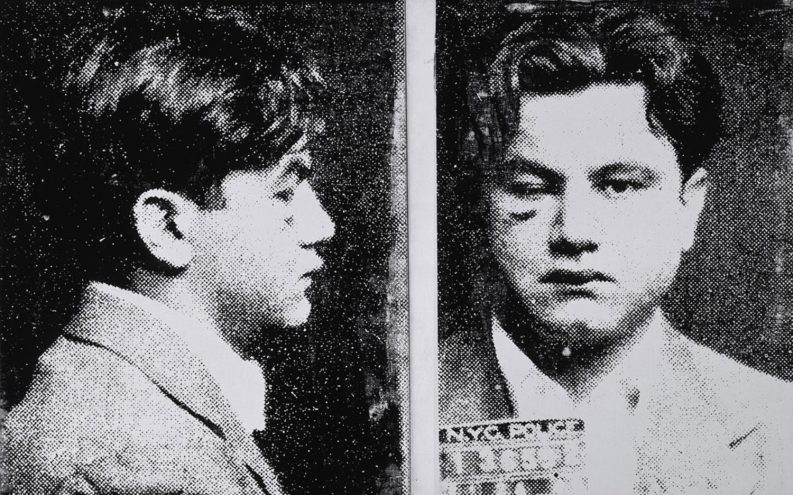In 2002 the Los Angeles Museum of Contemporary Art presented Andy Warhol: Retrospective, which included 240 pieces from 1942 through 1986. That’s a large show. Since I spent the whole day at the museum, I did occasionally feel the need to sit down and take a rest. Fortunately, the museum has a small auditorium where a selection of Warhol’s Screen Tests was being shown continually throughout the day, so a few times during my visit, I took the opportunity to watch some of these short films.
Between 1964 and 1966 Warhol made nearly 500 of the silent, black & white Screen Tests with his Bolex camera. Completely unedited, they were shot on 100-foot 16mm rolls in the standard twenty-four frames per second. However, Warhol conceived the films to be projected at a slower sixteen frames per second, extending the running time from under three minutes to over four minutes long.
Some of the subjects self-consciously pose. Or smoke. Lou Reed drinks from a bottle of Coca-Cola®. Jane Holzer brushes her teeth. Warhol often instructed the sitters to look straight into the camera and to not move. Edie Sedgwick and Mary Woronov both did a Screen Test in this manner, but Ann Buchanan adheres to the instruction most strictly – she goes the entire length of the film without blinking. At about the two-minute mark, a tear comes down her left cheek; by the end, tears are streaming down her face, but she still does not blink.
At one point while I was watching the films, a couple and their young daughter entered and sat down. The girl was probably seven or eight years old. She watched for a little while, but soon it became too much for her, and, obviously agitated, she loudly exclaimed, “This isn’t good! This isn’t good at all!”1
Although over the past twenty-two years I’ve often wondered what it was about the Screen Tests that elicited such a strong visceral reaction, I do realize it was perfectly rational, albeit a little over the top. Her parents probably told her they were going to watch some movies, and she reasonably thought in a movie, people do things. This does not occur in the Screen Tests; the subjects just sit there. Her parents, however, jumped into action, and the family quickly exited the auditorium.
The little girl’s judgment notwithstanding, I find the Screen Tests to be enthralling works which are most effective when the subject followed Warhol’s dictum. The slow motion gives the films a druggy quality, although not the amphetamine rush one associates with the Factory scene; the Screen Tests are more like a suspended barbiturate haze. The films relate to Warhol’s paintings of the time, especially the Most Wanted Men series, which are largely made up of mugshots. The face-front, unflinchingly factual nature of the police photos is echoed in the composition and starkness of the best Screen Tests. In essence, Warhol invented his own genre – film which reveals its subject in a similar manner as does painted portraiture.
Epilogue: A few years ago at a Goodwill Store in Sacramento I found the 13 Most Beautiful… Songs for Andy Warhol’s Screen Tests DVD2 and purchased it for three dollars. On it, one can view the films with or without soundtracks by Dean Wareham & Britta Phillips, both ex of the band Luna and who have a distinct Velvet Underground fixation. Although I am a casual fan and enjoy their music, the Screen Tests are most powerful when viewed in silence, as nature intended.
All Screen Test images © 2009 The Andy Warhol Museum. All rights reserved.
1 Her outburst would become a running gag between my better half, who was also there, and me.
2 Plexifilm/The Andy Warhol Museum (2009). This was the first-ever authorized DVD release of films by Andy Warhol, and is now out of print.













